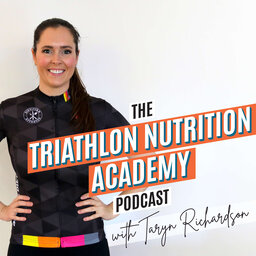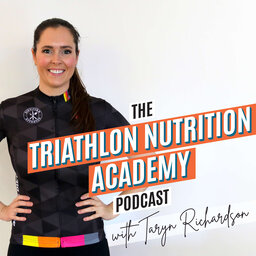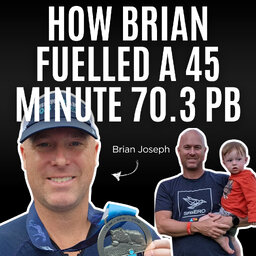Estimate your sweat rate: New free tool!
As a sports dietitian specialising in triathlon, one of the key elements I focus on with my clients is hydration strategy. Hydration plays a critical role in performance, and understanding your sweat rate is key to optimising your fluid intake.
Recently I was lucky enough to sit down with Lindsey Hunt, a senior sports scientist at Precision Fuel and Hydration, to discuss his work in this area and the great new tool that came from it. With an impressive academic background and hands-on research in human thermoregulation, Lindsey's insights are invaluable for athletes looking to fine-tune their hydration strategies.
Lindsey's research primarily focused on whole-body sweat rate prediction in both indoor and outdoor running and cycling. This involved numerous exercise trials with a broad cohort of participants to gather a comprehensive understanding of sweat rates across different conditions.
The culmination of this research is the sweat rate calculator, a free tool that helps you tailor your hydration strategy to meet your unique needs and perform at your best! It’s incredibly accurate, particularly indoors, where predictions were exceptionally close to actual measured sweat rates. Outdoors, the accuracy remained commendable, with predictions mostly within 400 millilitres per hour of actual measurements.
So, once you get your numbers, what do you actually do with this information?
Well, the way you use your sweat rate data depends on the specific event and environmental conditions you’re facing. Consider a 10k run as an example. Depending on the location and temperature, you might need only a minimal amount of fluid replacement to maintain performance and health.
However, for endurance events like a half marathon or longer, it's essential to replenish a substantial portion of the fluids lost through sweat. As the duration, intensity, and heat increase, so does the percentage of fluid replacement that is necessary.
However, it's critical to remember that the sweat rate calculator isn't a fluid replacement guide. You'll want to combine this data with your understanding of electrolyte needs, particularly salt intake, to avoid potential issues like hyponatremia during long duration events.
Key Takeaways for Triathletes:
- Know Your Sweat Rate: Before adjusting your fluid strategy, ensure you understand your sweat rate. This involves some trial and error during training sessions to find what works best for you.
- Consider Event Duration and Environment: The longer and hotter the event, the more aggressive your fluid replacement strategy should be. Don't fall into a one-size-fits-all approach; tailor it to the event specifics.
- Balance Fluid Intake with Your Needs: It’s not just about chugging water. Overhydration can be as detrimental as dehydration. Aim for a balanced intake that aligns with your calculated sweat rate.
- Plan Ahead: Use training sessions to test and perfect your hydration strategy, so on race day, you know exactly what your body requires.
Understanding your body’s sweat rate and how to manage it can prevent dehydration, reduce the likelihood of cramping, and overall optimise performance during your races. Stay hydrated and race smart!
LINKS:
Access The Sweat Rate Calculator: https://sweatratecalculator.com/
Check how well you’re doing when it comes to your nutrition with our 50 step checklist to Triathlon Nutrition Mastery: dietitianapproved.com/checklist
Start working on your nutrition now with my Triathlon Nutrition Kickstart course: dietitianapproved.com/kickstart
It’s for you if you’re a triathlete and you feel like you’ve got your training under control and you’re ready to layer in your nutrition. It's your warmup on the path to becoming a SUPERCHARGED triathlete – woohoo!
Join the waitlist for our next opening of the Triathlon Nutrition Academy www.dietitianapproved.com/academy
Website: www.dietitianapproved.com
Instagram: @Dietitian.Approved @triathlonnutritionacademy
Facebook: www.facebook.com/DietitianApproved
The Triathlon Nutrition Academy is a podcast by Dietitian Approved. All rights reserved. www.dietitianapproved.com/academy
 Triathlon Nutrition Academy
Triathlon Nutrition Academy


